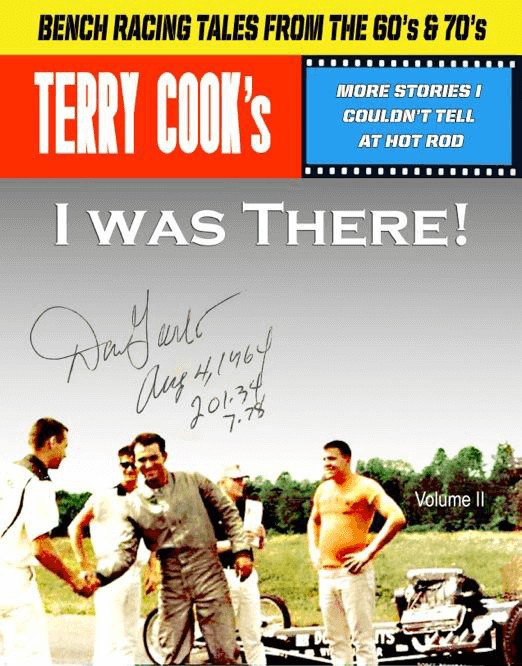
Don Garlits on flying saucers, God and politics, Hand Grenade Harry with tales from the Pond, Sal fish, John Force, Jocko Johnson, Malcolm Bricklin, the Surfers, the Prince of Monaco, Danny Thompson, Bill Maverick Golden, Connie Swingle, Wild Bill Shrewsberry, Emmerson Fittipaldi, test pilot Darryll Greenamyer and Chris the Greek Karamesines.
Chock full of nostalgic knee-slappers from Squires of Chatham, lurid never before told craziness from the vortex of custom van movement, the Cannonball Run, indoor drag races, 46.2 g’s of deceleration, the best car practical joke ever, Europe by low rider, the incredible Car Craft Hemi Cuda, my ten favorite car events, 80 foot flamethrowers and more…

Limited Edition Re-Print
AMERICAN CAR CULTURE AT ITS VIBRANT BEST
Wednesday night was “Cruise Night” in the San Fernando Valley, a suburb of Los Angeles. The stretch on Van Nuys Boulevard between Ventura Boulevard on the southern end, and well past Sherman Way to the north, teemed with kids and cars from all over Southern California on Wednesday nights. It was a terrific place to both see and be seen, and to show off your ride as well.Gas was cheap, times were great, and the boulevard hummed with life during the evenings. Even the «draft» during the Vietnam War did not dampen the street scene. By 1972, the year Rick McCloskey went to Van Nuys to shoot his series of photographs, the culture on the boulevard had become an amalgamation of divergent lifestyles, automobiles – used and new – and some very different «looks» and styles. There were «tribes» of van kids – surfers mostly – low-riders, muscle cars, street racers, Volkswagen owners, and many more, and of course, thousands of young people. The idea of «retro» had arrived as well, with some young people emulating the look and style of the 1950s. Of course, there were individuals who had to be there for work. In making these images, Rick McCloskey set about portraying the young people, their cars, and the iconic background settings. Today, young people no longer have anything similar to the past boulevard gathering places, where so many people can enjoy «just being there» together. Akin to starlight still trickling in from a long vanished world, these photographic images are what we have left
Hardcover
132 pages,
118 duotone plates with a text by the photographer
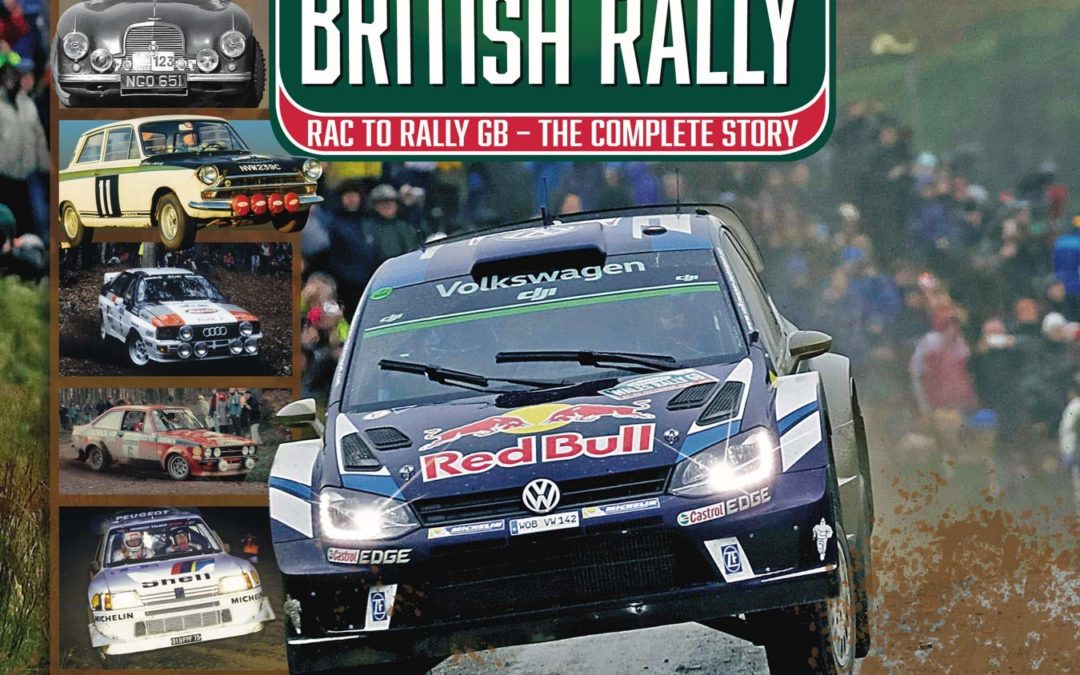
This is the complete history of British international rally events, starting with the very first RAC rally of 1932, which included 1,000 miles of road motoring, and when a mere three driving tests were needed to produce a result. By 1951 an international permit had been achieved, a speed element was included, and the ‘Rally of the Tests’ ran until 1960. From 1961, the event took on a number of high-speed, loose-surfaced Special Stages, the Scandinavian influence became clear, and the event took on a World Championship qualification in 1973. In that time, competing cars had progressed from having perhaps 50bhp to at least 300bhp, and even more high-tech machines with 500bhp and four-wheel-drive would follow.
By then the RAC Rally was – and remains, in its present form as Wales Rally GB – one of the three most important rallies in the world, every ‘works’ team makes sure that it is represented, and it has a very important image throughout the world. Major sponsors embraced the event from the 1960s – first The Sun and Daily Mirror, then Lombard, and Network Q, and finally the Welsh government – which in recent years has become a very high-profile showcase for the world’s most exciting cars. Few other British International events have such a long and distinguished record. The 75th running of this event takes place in 2019.
With year-by-year accounts of all events in the Rally’s history, copiously illustrated with period photographs, and covering the various challenges posed by such crises as foot and mouth disease, weather conditions and controversy over rules and regulations, this book is the definitive guide.

Skill up for life on the road
Pinpoint your perfect rig
Practical buying advice
Van-specific travel tips
The variety of people seduced by the idea of living, or at least holidaying, in a home on wheels is wide and all-encompassing; from retired couples to digital nomads, and from surfers living on an extreme budget to start-up professionals.
Van Life celebrates every aspect of a home on wheels, with help and advice on successful holidays, exciting sabbaticals and even a complete transformation to van life, leaving the static comfort of a roof and four walls and heading off into the unknown. Chapters include help on choosing your vehicle, where to find advice on refurb and conversion, what to pack, what to leave behind, and how to achieve those day-to-day challenges on the open road – like making a cup of coffee, getting your laundry done and finding a safe place to sleep.
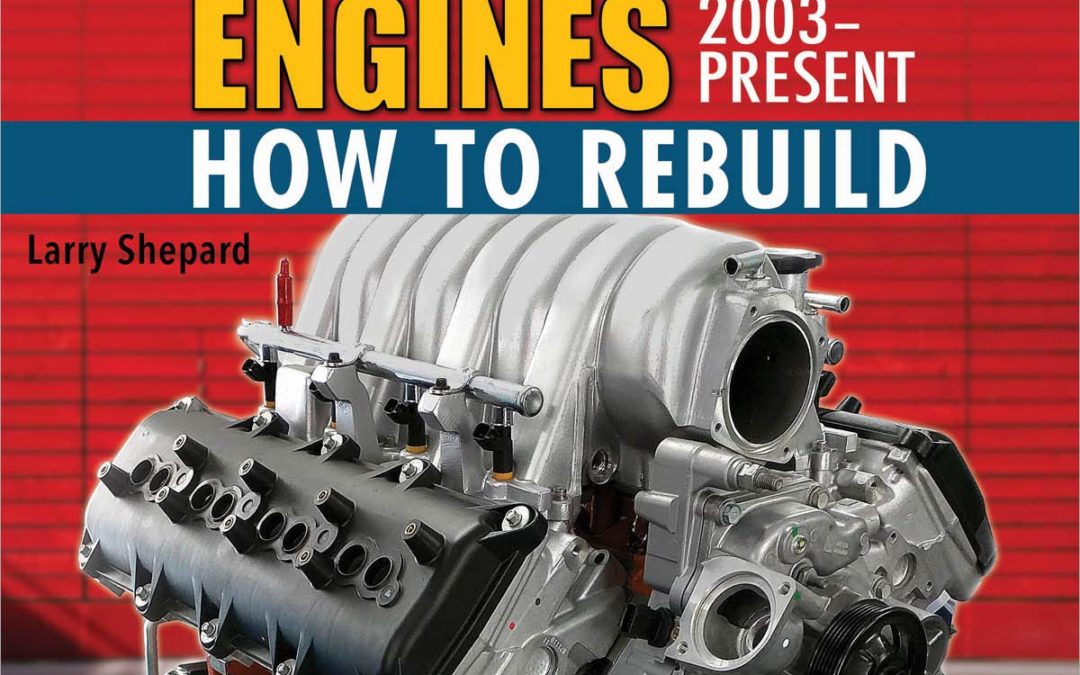
When Chrysler released the “new” third-generation Hemi engine in 2003, the automotive public placed high expectations on the Hemi’s triumphant return. The Hemi Gen III 5.7L, 6.1L, and 6.2L supercharged and 6.4L engines didn’t disappoint; they produced copious amounts of horsepower and torque while delivering exceptional durability. These powerful engines occupy the engine bays of new Challengers, Chargers, Magnums, 300C, Durangos, Jeep Grand Cherokees, and Ram trucks. Many of these engines have been used for high-performance service or logged hundreds of thousands of road miles, and as a result, many need to be rebuilt.
Long-time Mopar engineer, racing coordinator, and veteran author Larry Shepard delivers thorough instructions for each crucial step of the rebuilding process. Before commencing engine tear down, Shepard shows you how to perform compression and leak down testing to accurately assess the health of the engine. Disassembly and comprehensive inspection instructions are provided so you can determine and remedy any underlying problems. Expert insight allows you to select the ideal parts package for your rebuild, whether OEM replacement or compatible and complementary high-performance parts are selected. The most pertinent information for the latest machining practices is provided, so you can coordinate with the machine shop to return the block, head, intake, and other surfaces to like-new condition. Assembling the cylinder heads as well as accurately measuring, checking clearances, and test fitting parts is detailed, so you’re sure all components are within spec and ready for final assembly. Finally, comprehensive step-by-step instructions are provided for assembling all components into a completed engine.
The modern Hemi engine is lighter and stronger and offers far better drivability and performance than its predecessors. However, after hundreds of thousands of miles, extreme use, or high-performance applications, these rugged engines require a professional caliber rebuild. With this book, you can confidently complete your Hemi rebuild and get your car or truck back into action.
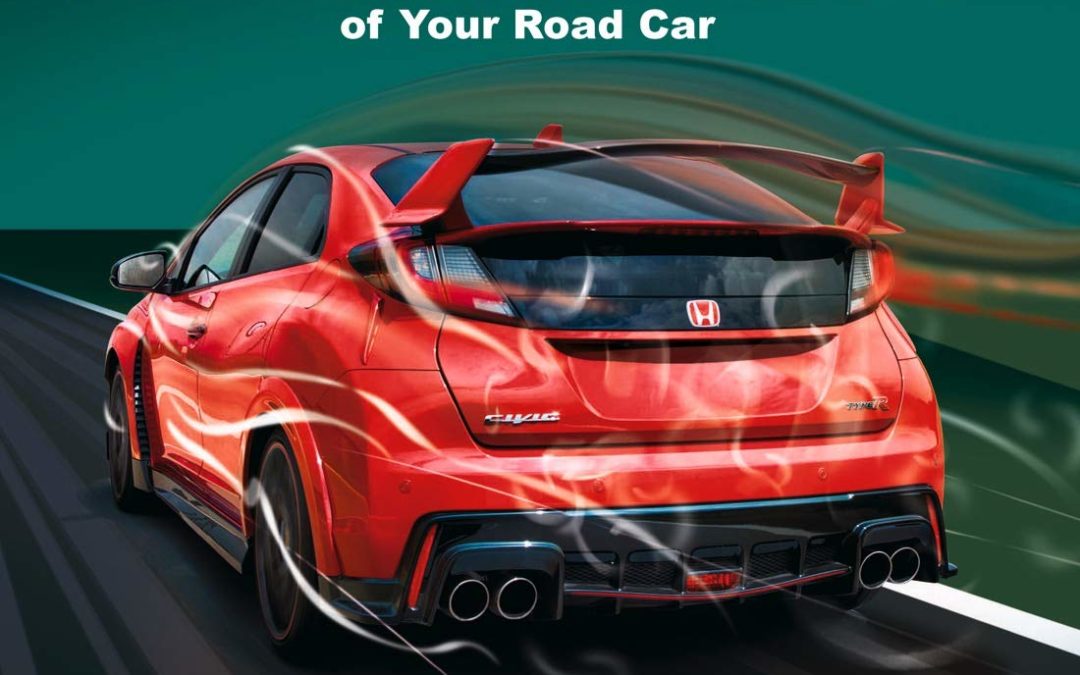
Modifying the Aerodynamics of Your Road Car is a unique handbook that assumes no starting knowledge of vehicle aerodynamics. It begins with simple ideas and finishes with sophisticated and effective aerodynamic modifications that work.
Three major chapters cover on-road testing techniques that give you all the information you need to decide what modifications you should make – and, after you’ve made them, how well they work. Low-cost techniques allow you to visualize the patterns of airflow over your car so that you can actually see the problem areas that need improvement. Uniquely, you’re also shown how to measure aerodynamic pressures, so you can determine which body surfaces are creating lift, drag and downforce. Want to work out where a wing should be placed? On-road testing to find that out is covered as well. The book also shows you how to measure downforce to see if that wing is actually working!
If you wish to reduce drag, more than ten different areas are covered. Reducing frontal area, lowering cooling system drag, optimizing vehicle ride height and rake, reducing the strength of the wake, achieving clean airflow separation and optimizing wheel designs are all covered using the latest research findings. And if you’re a performance driver, there’s a major chapter devoted to reducing lift and improving stability. This chapter includes the design and development of undertrays and diffusers, wings and spoilers. The example car developed measurable downforce when fitted with an undertray and rear diffuser, something that transformed its on-road handling.
The author has been writing about the aerodynamics of road cars for more than 25 years. He is also an experienced and proficient car modifier who has performed numerous aerodynamic modifications and upgrades to his own cars. The book’s technical consultant, RH Barnard, is an acknowledged world leading automotive aerodynamicist.
If you want a practical, hands-on guide that demystifies and explains car aerodynamics, and shows you how to make effective aerodynamic modifications to your car, this book is for you.
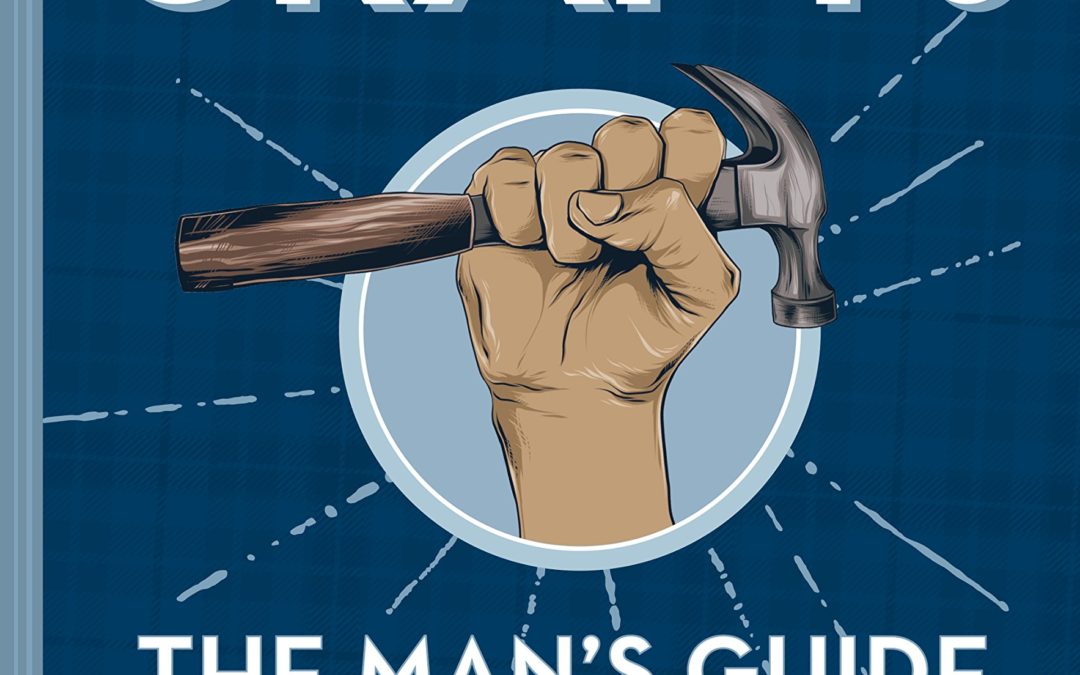
Dude Crafts is loaded with more than 50 slightly twisted, but somehow useful, projects that will keep crafty men out of trouble (or, sometimes, in it).
Whether making life easier with ingenious hacks or providing self-amusement, the 50 projects presented in Dude Crafts are sure to get any guy’s creative wheels turning. These DIY projects will get you on the path to developing your own creations, and impressing your friends.
You’ll learn how to:
- Craft an iPad cover from an old book
- Build a metal forge out of a busted microwave
- Cook a meal in the dishwasher
- Re-purpose an electric saw into a cocktail blender
- Fashion a Swiss army knife for your keys
- Outfit an unsuspecting co-worker’s office chair with an air horn
Each project is accompanied by a parts list and step-by-step photo instructions to get you building; often by hacking subpar stock goods or upcycling discarded objects into functional works of art and conversation pieces. No matter how off-kilter the project may appear on the surface, it’s sure to payoff as a useful tool, an art piece, the punch line to a practical joke or, best of all, a combination of all three.
Whatever the motive—to solve a problem, to play a joke, or for self-entertainment—Dude Crafts will get dudes off the sofa and into the workshop!
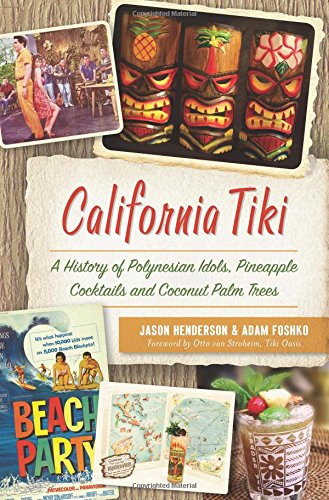
After World War II, suburbs proliferated around California cities as returning soldiers traded in their uniforms for business suits. After-hours leisure activities took on an island-themed sensuality that bloomed from a new fascination with Polynesia and Hawaii. Movies and television shows filmed in Malibu and Burbank urged viewers to escape everyday life with the likes of Gidget and Hawaiian Eye. Restaurants like Don the Beachcomber and Trader Vic’s sprang up to answer the demand for wild cocktails and even wilder décor. The culture–a strange hodgepodge of idols, torches, lush greenery and colorful drinks–beckoned men and women to lose themselves in exotic music and surf tunes. Authors Jason Henderson and Adam Foshko explore the state’s midcentury fascination with all things Tiki.
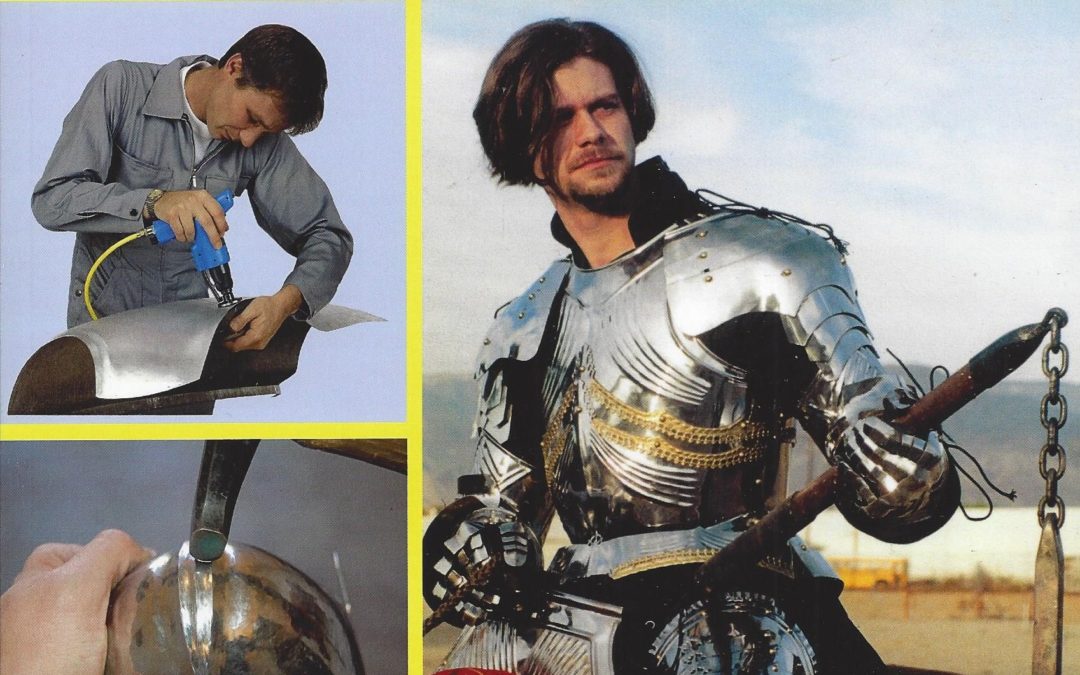
This volume contains chapters on: Making a Suit of Armour; Patterns and Templates; Hammers, Dollies, Stakes and Anvils; Stumps, Hammerforms Bludgeons and Bags; Caulking, Corking and Chasing; Sheet Metal Spinning; All About Engine Turning; Secrets of Bugatti Handscraping; All About Vixen Files; Delorean’s Stainless Steel Surface Graining, rolling, folding edging, joining options.
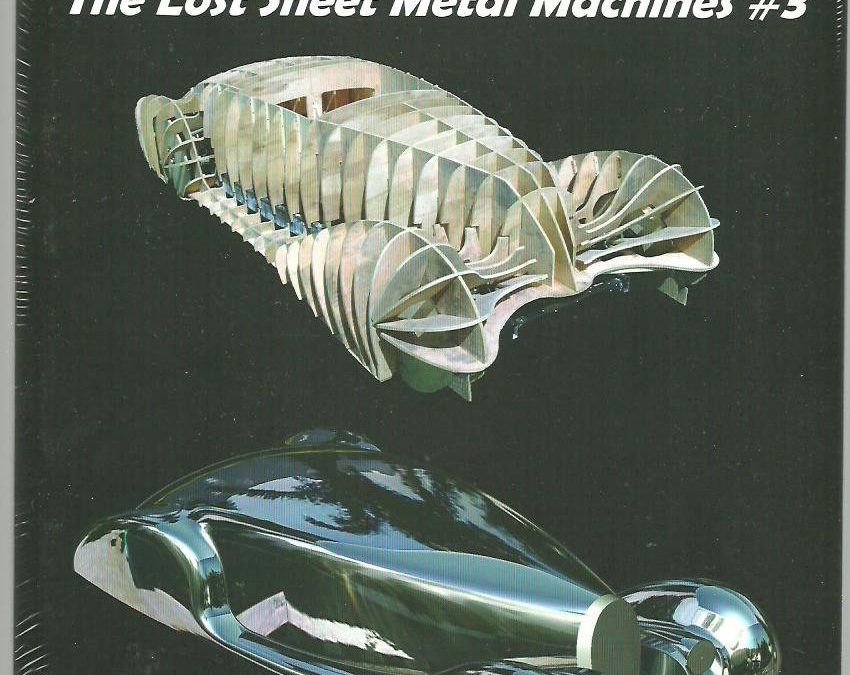
This volume contains chapters on: The Hand-Built Delahaye Project; Another Look at Digitally-Created Surfaces; Swedish Pullmax Universals, Part 1, The Machines; Swedish Pullmax Universals, Part 2, The Tooling; Shrinking and Stretching Machines; Reforming aka Contour, Profile and Finish-Forming; Eckold Ag, Lessons in Forming Sections. Includes, Body Bucks, Sheet Metal Spinning, Swedish Pullmax, Shrinkers/stretchers.

Metalshaping – Volumes 1 & 2 The secrets of shaping sheet metal are revealed, from the first car to current day and beyond. A four-year effort with over 500 contributors from around the world. Research includes the first patents, the first ads, and a breakdown of machinery models. Mind-blowing introduction to suppressed technology and to future-tech. Loads of photo instruction with full contact lists.
Book #1 Two chapters reveal the full history of automatic power hammers with original materials not seen in years. Two chapters show step-by-step body-making instructions in photos. One chapter covers “All about Louvers” and shows making louvers in detail. New discoveries in metal resurfacing are detailed in depth. Included is a history of why the technology was suppressed. One chapter shows inner and outer work on a Coach- built Ferrari.

The world’s superlative road trips—scenic, thrilling, and memorable—in both natural and urban settings.
For anyone who has fallen under its spell, a car represents freedom and adventure. For decades, the American tradition of the road trip has been bound up with the idea of new possibilities and new horizons. This book is an indispensable guide to the most beautiful, breathtaking, extraordinary, and fun road trips the world has to offer.
Complete with road trips varying in length and level of challenge, from an epic transglobal route inspired by Ewan McGregor and Charley Boorman’s Long Way Round documentary series to a two-mile blast around Monaco’s F1 street circuit, there is something for any adventurer. Each entry provides information about distance, start and finish points, road surfaces, must-see stop-offs, detours, and other details to plan an unforgettable trip.
Entries are organized into three categories: Scenic, Adventure, and Culture. One can marvel at the views from Cape Town’s scenic Chapman’s Peak Drive or central California’s Pacific Coast Highway, but the thrill seeker might opt for the hair-raising ride through Montenegro’s coastal mountains to reach the medieval walled town of Sveti Stefan on the Adriatic. The culture category features routes inspired by film, literature, and history: re-create Thelma and Louise’s heart-pounding joyride (minus the final leap), savor Japan’s “Romance Road” through unspoiled small towns, or follow Jack Kerouac’s path from On the Road.

Old campers have an appeal that reaches back in time and can send your imagination soaring. Let’s face it: they are cool. Who hasn’t seen one parked on a boulevard with a “for sale” sign and pictured it bouncing along behind the family car, ready for adventure and fun?
Unfortunately, campers are not quite homes, they are not quite cars, and they have their own unique systems and demands that make fixing and upgrading a challenge. Even if you have plenty of DIY experience, a camper speaks a foreign language. Consider Camper Rehab your Rosetta Stone for the language of Shasta, Dutchmen, or Airstream.
This book is a top-to-bottom guide to getting a fifth-wheel, teardrop, or other camper trailer ready for the road and beyond. From basic troubleshooting to electrical and plumbing projects, replacing interior surfaces, and clever (sometimes “retro”) decorating ideas, this book uses detailed illustrations, color photography, and a wealth of step-by-step, how-to information to get help you get your travel trailer into shape for your next big–or little–adventure.
And in case you haven’t pulled the trigger on that trailer you’re eying on Craigslist just yet, Camper Rehab also walks you through the process of evaluating a potential purchase, identifying which issues are fixable and which are dealbreakers, as well as how to spot hidden problems. Written by accomplished DIY author Chris Peterson, whose light and approachable tone is coupled with the hardworking DIY information you need, Camper Rehab is a must-have for any camper owner or dreamer.

A comprehensive history with descriptions of the world’s most significant aircraft employed as “eyes in the sky.”
For as long as there has been sustained heavier-than-air human flight, airplanes have been used to gather information about our adversaries. Less than a decade after the Wright Brothers flew at Kitty Hawk, Italian pilots were keeping tabs on Turkish foes in Libya. Today, aircraft with specialized designs and sensory equipment still cruise the skies, spying out secrets in the never-ending quest for an upper hand.
Spyplanes tackles the sprawling legacy of manned aerial reconnaissance, from hot air balloons to cloth-and-wood biplanes puttering over the Western Front, and on through every major world conflict, culminating with spyplanes cruising at supersonic speeds 85,000 feet above the Earth’s surface. Authors Norman Polmar and John Bessette offer a concise yet comprehensive overview history of aerial recon, exploring considerations such as spyplanes in military doctrine, events like the Cuban Missile Crisis and the downing of Francis Gary Powers’ U-2, the 1992 Open Skies Treaty, and the USAF’s Big Safari program.
Polmar and Bessette, along with a roster of respected aviation journalists, also profile 70 renowned fixed-wing spyplanes from World I right up to the still-conceptual hypersonic SR-72. The authors examine the design, development, and service history of each aircraft, and offer images and specification boxes that detail vital stats for each. Included are purpose-built spyplanes, as well as legendary fighters and bombers that have been retrofitted for the purpose. In addition, the authors feature preliminary chapters discussing the history of aerial surveillance and a host of sidebars that explore considerations such as spyplanes in military doctrine, events like the Cuban missile crisis and the downing of Francis Gary Powers’ U-2, the 1992 Open Skies Treaty, and the USAF’s current Big Safari program.
From prop-driven to jet-powered aircraft, this is the ultimate history and reference to those “eyes in the skies” that have added mind-bending technologies, not to mention an element of intrigue, to military aviation for more than a century.

Become a media blasting and metal preparation expert with knowledge from the pages of this book and apply it to get the best possible results for your project.
In Media Blasting & Metal Preparation: A Complete Guide, restoration expert and veteran author Matt Joseph provides all the instruction you need to prepare your car, motorcycle, or anything made of metal for the next stages of restoration. Covered are basic metal considerations, such as type and size of metal; intended purpose of cleaning the metal; approaches to cleaning metal through chemical, mechanical abrasive, and media abrasive systems; mastering the processes for consistent results; small- and large-scale projects; and post-cleaning prep procedures.
A key component, often overlooked, in automotive restoration is metal preparation. In essence, all the best bodywork, primer, and fancy paint won’t do you any good if the metal surface it adheres to is not expertly prepared. How many times at a classic car show have you seen imperfections in the paint, bubbles coming from underneath, and body filler separating from the metal? In almost every instance, this is the result of poor metal preparation during the initial stages of the restoration process.
In short, anyone who takes shortcuts in the metal preparation area of restoration is virtually guaranteed disappointment down the road. With this handy new guide, Joseph provides all you need to know for a successful and long-lasting restoration.

Road racing has long-storied roots in North America that reach from coast to coast and to Canada. Some of the greatest drivers to ever compete raced wickedly fast machines, staged epic duels on winding strips of asphalt, and created history. This history left an enduring legacy that is revealed and celebrated in Lost Road Courses. Road racer and road racing expert Martin Rudow retraces road racing’s glorious past and visits the defunct classic road courses across the United States and Canada.
Many road courses were built in the 1950s and 1960s, the golden age of American road racing. These classic road courses built and hosted famous races for Trans-Am, Can-Am, IndyCar, Formula 1, and sports car racing, but did not survive the times. They fell victim to changing times, poor business decisions, urban sprawl, safety standards, and increasing real estate prices. Rudow recounts the breathtaking races and fascinating history of more than 16 tracks from around North America. Riverside International Raceway, Bridgehampton Race Circuit, Ontario Motor Speedway, Continental Divide Raceway, and many others were once major race venues that have since closed. The great race teams, legendary drivers, classic race series that visited the tracks, and cars that turned laps are brought into full focus. The exploits of Chaparral, McLaren, Bud Moore, Lotus, Penske, and other race teams as well as racing greats Mario Andretti, Parnelli Jones, Jim Hall, A. J. Foyt, Al Unser, Jim Clark, and Dan Gurney are covered. Rudow also digs beneath the surface to reveal the story behind the story. The visionaries and businessmen who saw potential and risked capital to build these palaces of speed come back to life. He also recognizes the unsung heroes and regional racers who competed, staffed, and took on various roles at these tracks.
In the pages of this book, a nostalgic tour of these famous races at these vintage road circuits unfolds. Many period photos illustrate the racing action and the tracks themselves in their former glory, and modern color shows the tracks as they currently stand. If you’re a fan of classic sports car, Can-Am, Trans-Am, IndyCar, Formula 1, as well as classic and unique tracks of yesteryear, this book is a must-have.

SOLD OUT
The Rocket Manual tells the story of rocket motors, how they were first developed, how they work, what they are used for and how they are operated. It also explains the origin and operating record of satellite launchers around the world. Rocket motors large and small are listed and explained, including small motors used to push satellites and spacecraft into different orbits, throttleable rockets for controlling spacecraft descending to the Moon and the surfaces of other planets, restartable motors for adjusting orbits and reusable motors such as those developed for the Shuttle.

The annual Temporada (racing season) created a transition in Argentine motor sport. In earlier years racing circuits were primarily on rough tracks, with cars designed to cope with poor surfaces. Lacking the resources or technology needed to create bespoke circuits, Argentina looked to create racing venues from what it already had: public paved parks. After WWII, the Temporadas were organised in the Torreon in Mar del Plata, Parque Independencia in Rosario, Palermo, Constanera and Retiro in Buenos Aires, and Sarmiento in Cordoba. Thanks to these races, held in public parks and on public roads, Argentina began to be seen as a potential destination for a Formula 1 Grand Prix and for a round of the world sports car championship, the Beunos Aires 1000km. The circuits hosted the likes of Billoresi, Varzi, Farina, Wimille, Ascari, Moss and Prince Bira, and arguably taught Juan Manuel Fangio how to drive race cars. Wonderfully illustrated with 220 contemporary photographs, including many that have never been published before: images that will take you back in time, to the unique atmosphere of top motorsport in South America from 1950 to 1960.

Become a safer and smarter rider! Whether youre a beginning rider or a grizzled veteran of the road, you are guaranteed to find insights, training exercises, and riding tips that will significantly reduce your riding risks. Filled with plain talk about surface hazards, weather problems, wild animals, carrying passengers, group rides, and traveling. Written by legendary rider training guru David L. Hough.

The Fencer, with its distinctive three-position variable-geometry wings, is the Soviet counterpart to the American F-111, though somewhat smaller and lighter, and to a lesser extent the Tornado. Its origins certainly owed a lot to Soviet observation of the American TFX competition and the resulting swing-wing variable-geometry solutions. First flown in 1971, it entered service from 1974 as a replacement for the Yak-28 and remains an important part of the Russian VVS inventory, with several hundred having been in service. It is able to carry a wide range of air-to-surface missiles and is capable of carrying out precision attacks in hostile airspace at night or during poor weather. Much larger and more capable than previous Soviet aircraft, it combines great penetrative ability with a heavy and varied bomb load, but is such a versatile airframe that it has also been developed in various other versions including tactical bomber, electronic warfare, and reconnaissance. As usual with the Aerofax series, this book includes extensive detail of systems, equipment, weapons, etc., and a plethora of previously unpublished photographs and drawings.






















